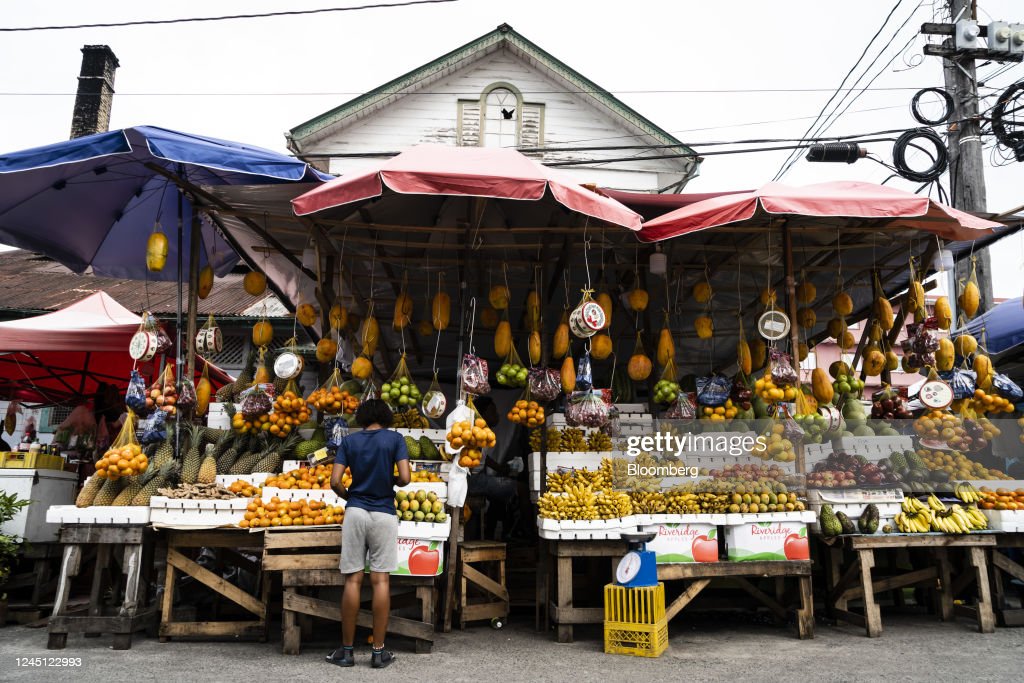By H. Arlington Chesney
News Americas, NEW YORK, NY, Tues. Jan. 31, 2023: An integrated and holistically conceptualized oil and gas (petroleum) sector could assist in developing a transformed and modernized Guyana and regional agriculture and contribute to regional food security. It could thus again be a key driver in the sustainable development of CARICOM.
From the onset, I have strenuously articulated the need for a critical relationship between the windfall revenues of the oil and gas sector and food security in Guyana and all CARICOM. Initially, Guyana’s oil and gas revenues were promoted as a major catalyst for expanding and modernizing its agricultural and rural sectors. This need was supported by the concept of “agriculture being more than food on the table” and its resultant “true”, expanded and major importance to sustainable national development. Further, these bonanza revenues were identified as critical to successful achievement of Guyana’s climate change adaptation measures, particularly for its socio-economically important low lying coastal and riverine areas, as part of its Low Carbon Development Strategy 2030. Ultimately, with the developed world’s failure at COP 27 to guarantee immediate inflows of funding required to address major climate change issues, the existential relationship between regional (Guyana, Suriname and Trinidad and Tobago [T&T]) oil and gas windfalls and its food security, in general, and the 25×2025 initiative, in particular, was expounded.
This article discusses how the components of the oil and gas sector (as opposed to their windfall revenues) could facilitate agriculture’s backward (inputs for primary commodities) and forward (elements for secondary commodities) linkages thus ensuring that the major components of the value chains of key agricultural commodities are substantially controlled regionally. Consequently, the concept “Agriculture is more than food on the table” could be operationalized.
Further, it identifies critical inputs for production of both primary and secondary agricultural commodities as compared to previous ones dealing with mostly primary production.
Ranken Energy Corporation, a respected 30+ year oil and gas Company, opines that, “with over 6000 products and counting, petroleum continues to be a requirement for all consumers”. Agriculture is one such key consumer.
Agriculture, the consumer, requires products from the downstream segment of the petroleum industry—refineries and Natural Gas Liquid [NGL] plants.
Some major agricultural products obtained from petroleum and associated natural gas include fertilizers, particularly ammonia-based, pesticides and antiseptics mainly for udder washes for dairy animals. Fertilizers, with annual regional imports approximating US$100m, is the largest single group.
The proposed modular refinery in Berbice, Guyana, should be conceptualized in its design and locality (a petroleum-based park) to definitively facilitate sustainable production of the above-named commodities. The experiences in T&T are useful as Guyana’s production should complement that of T&T. Indeed, these countries, plus Suriname, will initially share the Caricom Market, and can significantly contribute to regional energy and food security: two of the three major developmental priorities of CARICOM Heads.
Also downstream, the petroleum industry, through the NGL plant, can produce hydrocarbons, including the gases methane, butane and ethane—all of which can help provide for residential and industrial needs.
In spite of public queries, the Guyana Government (National Budget, 2023) is committed to a Gas to Energy/Gas to Shore Project with a targeted electricity rate, substantially cheaper than the regional range of USD0.20-0.37/kWh and approximating that of a currently subsidized T&T rate of USD0.05/kWh (November 2022). Guyana and T&T will have very favorable electricity rates for producing (processed and frozen) secondary agricultural food commodities.
This integrated program should be included in the Draft Action Plan for Industrial Development in CARICOM to be presented to the Quasi Cabinet of Heads within its newest portfolio, Industrial Policy.
In 2021, the annual regional imports of secondary agricultural food (meat, fruits, vegetables, dairy, juices) commodities, plus, as necessary, inputs for their manufacture, approximated US$1.3b. Small quantities originated regionally, mainly from T&T with its cheaper electricity.
Also, the annual value of imported secondary agricultural food commodities is reported as increasing faster than that of food imports generally. This phenomenon is probably due to increasing preferences for convenience foods, with the accompanying increased Non-Communicable Diseases (NCDs) and concomitant curative costs.
In the spirit of the 25×2025 Food Security Initiative, Guyana and T&T can immediately gear up to access this major regional market (and subsequently that of the regional diaspora) for these commodities. However, this Program, with supporting country projects, must critically now be based mainly on regional, as opposed to extra regional, sources of primary inputs. In the context of regional inclusiveness, all member states should be involved in producing these primary inputs.
Opportunity could also be taken, with the support of the Caricom Regional Organisation for Standards and Quality (CROSQ), to develop regional standards for these commodities that aim to reduce the incidence of NCDs and its.
Some known critical factors to facilitate implementation of this Program must be aggressively addressed with approved schedules for achieving agreed objectives and targets. Firstly, as articulated by Prime Minister Rowley, at the Agri Investment Forum and Expo II, August 2022, the traditional importers of these secondary food commodities must meaningfully “come on board” to this “new” paradigm. Secondly, the Non-Tariff Barriers to Trade must be dismantled, starting on a commodity basis and, taking into consideration, the recent amendment to the Revised Treaty of Chaguaramas which allows for a “Group of the Willing” to proceed. Thirdly, intraregional transport for primary and secondary products, which is currently a “nightmare”, must be effectively operational. Fourthly, the Caricom Private Sector Organisation (CPSO) and the Caribbean Agribusiness Association (CABA) must come together and organize their members to meaningfully participate on a commodity basis.
This Program, based on critical upstream and downstream activities within the regional petroleum industry, would allow CARICOM to significantly control key elements of the supply chain for the production of both primary and secondary food commodities. It also allows for the development of Regional Agricultural Corridors as proposed by CPSO. Further, it allows the gas producing territories to actively explore commercial production of nutraceuticals and, based on the region’s expansive flora and fauna diversity, herbal medicines.
Both the Guyanese refinery and NGL plant are projected to be operational by mid-2025. Consequently, it may be posited that it’s too early to initiate activities to ensure achievement of this reality. However, the CARICOM Medium/ Long Term Action Plan, for agricultural development towards food and nutrition security, identifies the need to resolve 11 major issues with 50+ subitems. These include:
- Policy implementation to reduce regulatory barriers to address intra regional trade;
- Support to development of improved food quality standards and best practices;
- Incorporation of climate smart technology into agrifood systems; and
- Supporting agricultural MSME growth in the agro industries and food processing.
These “soft issues”, plus the other generally “hard issues” previously mentioned, require time for completion.
Successful implementation of this upstream/downstream oil and gas initiative must be a Public/Private undertaking, led by the Caricom Ministerial Task Force (CMTF) as part of its Agri-Food Systems Agenda, with meaningful collaboration of CPSO and CABA. Because of agricultural development’s all-embracing and intertwining nature, the CMTF must also work very closely with the team preparing the draft Action Plan for Industrial Development and other regional groupings in trade, health, transport, security, etc.
This program, facilitated by the regional petroleum sector, could, in the medium term, contribute to an enhanced quality of life by operationalizing an economically viable, a much less supply (source and chain) dependent and self-sustaining regional agricultural sector.
EDITOR’S NOTE: Dr. H. Arlington Chesney is a leading Caribbean Agricultural professional who has served his country, the Caribbean and the hemisphere. He is a Professional Emeritus of IICA and in 2011, was awarded Guyana’s Golden Arrow of Achievement for his contribution to agricultural development in Guyana and the Caribbean.










